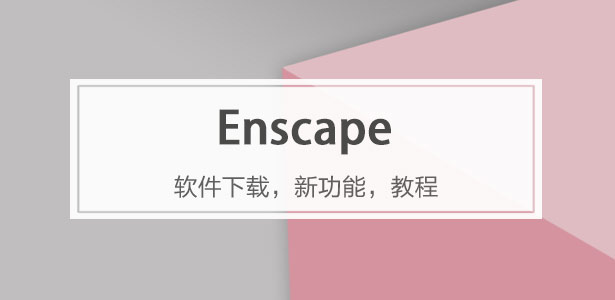* 主體類型
* 企業名稱
* 信用代碼
* 所在行業
* 企業規模
* 所在職位
* 姓名
* 所在行業
* 學歷
* 工作性質
請先選擇行業
您還可以選擇以下福利:
行業福利,領完即止!

下載app免費領取會員


建筑師藤本壯介闡釋“森林理念”將成為一切的核心
Architect Sou Fujimoto explains how the ‘idea of the forest’ is central to everything
由專筑網Yinglin,小R編譯
過去五年間,藤本壯介以設計監制身份主導策劃2025年大阪世博會園區規劃。值此Wallpaper* 2025設計大獎揭曉之際,這位日本建筑大師暢談了2024年及未來一年建筑界在材料性、自然觀、多樣性以及技術進步等領域的思考。
Sou Fujimoto has been masterminding the upcoming Expo 2025 Osaka for the past five years, as the site’s design producer. To mark the 2025 Wallpaper* Design Awards, the Japanese architect talks to us about 2024, the year ahead, and materiality, nature, persity and technological advances

▲ 這張肖像攝于東京越中島工作室,記錄了藤本壯介擔任《Wallpaper*》2022設計大獎評委的工作狀態。
Architect Sou Fujimoto photographed in his studio in Etchujima, Tokyo for his role as a judge at the Wallpaper* Design Awards 2022
(Image credit: Kyohei Hattori)
森林不僅是充盈樹木的戶外空間,更是指引未來生活與建筑創造的范本。我在日本北部長大,童年在森林中嬉戲的時光塑造了我的認知。那是一片親密無間的所在,雖存多元區域卻無明確界限,萬物以柔和姿態交織共生。當我們的腳步邁向2025年,我愈發確信森林應成為建筑與社會的理想范式——它揭示了個體如何在多樣性中綻放獨特光彩,同時維系深層聯結;更昭示著人與自然和諧共生的可能路徑。
當下恰似嶄新時代的破曉時分。這是一個深刻變革的時代,而變革永遠是孕育新思想、新理念、新設計的溫床。價值體系正在重構,社會形態持續演進,這種歷史時刻的震蕩感,恰與20世紀現代主義時期開端形成奇妙共振——彼時涌現的先鋒思潮,同樣深刻形塑了人類百年來的生存方式與思維范式。
A forest is more than an outdoor space filled with trees: it is a model for how we can live our lives and create architecture for the future. Growing up in northern Japan, I spent my childhood days playing in the forest. It was a place of intimacy, with many perse areas yet nothing pided, everything softly interconnected. As we move into 2025, I see the forest as a model for architecture and society. It shows us how distinct identities can thrive in persity while still being connected – and how harmony between humans and nature can be rediscovered.
Today feels like the dawn of a new modern age. It is a time of profound change – and change always sparks new ideas, concepts, designs. Our values are shifting, societies are evolving and this moment in history feels similar to the start of the 20th-century modern age, when new ideas deeply shaped how we went on to live and think.

▲ 這張肖像攝于藤本壯介2024年設計的東京佩斯畫廊空間內
Fujimoto, photographed at art gallery Pace Tokyo, which he designed in 2024
(Image credit: Akira Yamada)
藤本壯介的2024總結與2025趨勢前瞻
歷經百年變遷,諸多“現代”思維范式與概念體系已顯不合時宜。新冠疫情猶如一面明鏡,映照出傳統范式的深層滯后。我們正面臨著由可持續性、多樣性、生物科技、人工智能、過度互聯與自然倫理等命題構筑的新認知疆域。對于思考世界圖景的新生代而言,未來一年必將充滿智性激蕩。我預見創造力的革命浪潮將席卷建筑、藝術、音樂等各個領域——唯愿新生代設計師能以足夠的勇氣與真誠,持續推動這場變革進程。
于我而言,2025年的焦點無疑是四月啟幕的大阪世博會。過去五年傾力打造的巨型木構環狀建筑,將呈現世界文明交融的盛景——各國展館設計理念與全球文化活動在此完美共生。包括日本在內的諸多國家,都在探索基于可持續理念的未來建筑范式。木材建筑的全球復興浪潮尤為顯著,近十年來,通過每月往返巴黎事務所的觀察,我深刻感受到從自然材料運用到循環建造技術的范式轉變,這種趨勢在后疫情時代更顯蓬勃之勢。
Sou Fujimoto on 2024 and what's coming in 2025
Now, after more than 100 years, many “modern” mindsets and “modern” concepts are irrelevant. The COVID pandemic made us realise how outdated much of it is. We now have new situations, points of view and questions to answer: about sustainability, persity, biotechnology, AI, over-connection and nature. The year ahead is likely to be an exciting time, particularly for younger generations thinking about the world around them. I see creative revolutions across every category – architecture, art, music. My hope is that the young designers of tomorrow will be brave and honest enough to continue driving this change forward.
For me, 2025 is all about the Osaka Expo, which opens in April. I have been working intensively on this for the past five years, creating a large timber ring structure. It’s a truly global event, a wonderful integration of different pavilion designs and international activities. Many countries – including Japan – are trying to explore future architecture based on sustainability. There are many wooden structures and I sense a real push across the world to create more sustainable architecture. I’ve noticed, from monthly visits to my Paris office, that in the last 10 years, there has been a strong global shift towards wooden construction, natural materials or reusing and recycling. This has become even more active since the pandemic.

▲ 藤本壯介設計的匈牙利音樂之家
House of Music in Hungary by Sou Fujimoto
(Image credit: Palkó György)
此刻,大阪世博會正為實踐最新穎的木構創新試驗搭建舞臺。人們不禁要問:“當下語境中的可持續性究竟呈現何種樣態?”作為日本建筑師,這個命題令我深思——在全球可持續發展版圖中,日本尚處后位。世博會恰是日本社會在全球視野中深度思考可持續命題的絕佳契機。當我們公布設計方案時,許多日本民眾并不理解這個為世博會設計的木構環狀體。
在傳統認知中,木結構多用于私人住宅、寺廟神社,似乎與尖端建造技術無緣。但隨著世博環狀體方案與全球其他大型木構項目同期曝光,我感受到日本民眾正逐步理解我們的愿景。關鍵在于開啟人們對木構建筑可能性的全新認知——期待通過意大利館、捷克館等建筑實踐進一步強化這種理念。
Now, the Osaka Expo sets the stage for realising the newest and most innovative trials into wooden construction. One can wonder: ‘What does sustainability look like in the current climate?’ As a Japanese architect, it’s interesting for me to think about this, because Japan is quite far behind globally in terms of sustainability. The Expo is a great opportunity for Japanese society to think more deeply about sustainability in a global context. When we revealed our proposal, many Japanese didn’t understand the wooden ring we designed for the Expo.
For many, wooden construction is for private homes, temples or shrines – it’s not thought of as a showcase for the latest building technology. But recently, the ring has been widely published at the same time as other large-scale wooden constructions are also being noticed – and I feel that Japanese people are starting to understand our vision. It's all about opening people’s minds to the different possibilities of wooden construction – and hopefully, this will be emphasised through other structures such as the Italian Pavilion and Czech Pavilion.

▲ 藤本壯介與Nicolas Laisné、Dimitri Roussel及OXO建筑事務所合作的“白樹塔”,這件位于法國蒙彼利埃的純白雕塑性住宅作品,正是這種創新精神的具象化呈現。
Sou Fujimoto, Nicolas Laisné, Dimitri Roussel and OXO architectes collaborate on L’Arbre Blanc, a bright, white, sculptural residential scheme in Montpellier, France.
(Image credit: SFA+NLA+OXO+DR)
從多維度審視,日本雖在某些領域滯后于國際標準,卻擁有卓越的設計傳統與建筑智慧,更兼社會組織的高度秩序性。尤為珍貴的是,我們傳承著與自然共生的千年智慧——這種鐫刻在民族基因中的生存哲學,在傳統日式住宅中得以完美呈現:移門紙窗造就的模糊邊界,輕量化建筑本體與庭院自然的有機對話,構筑出以自然景觀為核心的生活場域。這種建筑不是孤立的存在,而是廣袤生態環境的有機延伸。當下的核心命題在于:如何將這種自然觀更深層地融入現代設計?答案絕非簡單的垂直綠化裝飾,而需觸及本質的范式革新。
自然本質中蘊含著不可控性。20世紀人類妄圖掌控萬物的野心已然破產——地球生態系統以其磅礴偉力、生物多樣性及精妙運作機制,始終超越人類控制維度。此刻歷史節點恰是開啟認知革命的契機:學會接納不可控性,這絕非消極姿態,因為未知領域往往孕育靈感迸發的驚喜。當然,必要的自然調控仍不可或缺,但關鍵要在享受自然饋贈、擁抱意外驚喜與維系生態平衡之間,尋得更具智慧的共生之道。
In many ways, Japan is behind global standards. But we have good quality of design and architecture; plus, society is very well organised. We also have a tradition of living together with nature, an important aspect of Japanese life. We need to push this to the world, as for more than 1,000 years, we have been living with nature in Japan. Daily life and philosophies have evolved in harmony with nature. We see this in the traditional Japanese house, with its sliding paper walls and blurred boundaries. The architecture itself is very light: the garden and surrounding nature are the main focal points of a home. The built structure is part of a wider living environment and nature. So how can we integrate nature further into design? It’s not just about bringing greenery onto buildings – this is always nice, but it goes beyond that.
The important point about nature is that we cannot control it. In the 20th century, humanity set out to control everything – we learned this wasn’t possible. Earth is bigger than us. It has dynamism, power, persity of animals and plants, and beautiful ecosystems. This moment in human history is an opportunity to open our minds – and sometimes be exposed to the uncontrollable. This is not a negative state because the uncontrollable is unpredictable, bringing inspirational surprises. Of course, sometimes we need to control nature, but we have to find a better balance between enjoying it, embracing its surprising aspects and living in harmony with it.

▲ 藤本壯介2014年設計的倫敦蛇形畫廊展亭
Sou Fujimoto's 2014 Serpentine Pavilion in London
(Image credit: Iwan Baan)
這場疫情恰成絕佳注腳:整個20世紀,人類構筑起精密高效的社會系統——雖具歷史必要性,卻難掩過度控制的痼疾。這種控制欲不僅戕害自然生態,更反噬人類自身,建筑領域尤見其弊。當我們將建筑功能推向極致,看似提升效率,實則禁錮思維,最終窄化生命維度。人類生活本如自然:充滿彈性與曖昧性。強求掌控一切只會制造壓抑張力,我們亟需為自由留白。
常駐巴黎的經歷讓我欽佩歐洲社會對個體自由的尊崇。日本雖同樣珍視自由,但社會和諧共識往往優先,致使個人自由常屈從集體意志。這種文化特質猶如雙刃劍,利弊共生。
The pandemic is the perfect example. Until the last century, we developed and built a very efficient system for society – this was important but maybe too controlling. It had a hugely negative impact on nature, Earth – and humankind. We can see this in our buildings. We have tried to make buildings as functional as possible – but if you make them too functional, it limits people’s minds and ultimately their lives. Human life is like nature: it is flexible and ambiguous. If humans try too hard to control everything, they create negative pressure – we need space for freedom.
Having spent a lot of time in Paris, I admire European countries – there, society is based on the idea of inpidual freedom. In Japan of course we have this – but the idea of harmony in society is also very important, so people often repress their personal freedom and follow societal consensus. This can be both positive and negative.

▲ 藤本壯介2020年設計的白井屋酒店
Fujimoto's Shiroiya Hotel, 2020
(Image credit: TBC)
當下日本正經歷多元化進程,可經濟低迷卻逆向催生保守思潮。但即便在這樣的語境下,仍不乏遠見卓識之士——我的許多委托方皆是銳意創新的企業創始人,他們致力于探索更契合地球未來的發展路徑。我始終關注如何將“多樣性”與“統一性”辯證融合:既要促進多元綻放,更要避免群體割裂;需培育不同觀點、態度間互動共生的共同體意識。
這正是大阪世博會總體規劃的核心命題。面對全球分裂加劇的復雜局勢,人類亟需培養包容胸襟——接納多元價值體系,理解"不可控性"如同自然法則般客觀存在。唯有如此,方能終止無休止的對抗。本世紀前二十載已見證翻天覆地的變革,這種變革既體現為實體設計產品的迭代,更深植觀念層面的覺醒。當下人們比以往更理解公共空間作為聚合場域的價值,或許這正是我們該放緩腳步的時刻。
Japan is becoming more perse – but the economy is not in a good state and Japanese society unfortunately tends to become more conservative when this happens. Having said that, there are still many visionary inpiduals – many of my clients, for example, are founders of companies trying to do something different and more suitable for the future and the Earth. I am interested in how we can combine the ideas of “persity” and “unity”. We need to enhance persity – but avoid people being pided and clustered against one another. We should help create a sense of unity, with interactive relationships between different points of view and attitudes.
This is discussed in the masterplan at the Osaka Expo. This is extremely important in light of a very pided and complex global situation. As humans, we need to be generous – and accept different values and viewpoints and the fact that people are uncontrollable, just like nature. Otherwise, we will never finish fighting one another. The first quarter of this century has witnessed huge revolutionary changes – not just physical, in the form of wonderful design products, but also conceptual. Now, people understand the importance of public spaces – places for gathering. We need to slow down.

▲ 這是藤本壯介“House N”住宅項目,這張照片于 Iwan Baan建筑攝影展展出,該攝影展在維特拉設計博物館舉辦。
House N by Sou Fujimoto, recently seen at the Vitra Design Museum show on photographer Iwan Baan's work
(Image credit: Courtesy of Iwan Baan and Vitra Design Museum)
探索這種動態關系,材料研究不失為關鍵路徑。未來五十年間,游走于自然與人造物之間的生物技術,將在建筑領域彰顯愈發重要的價值。建筑革命始終與材料革新并轡同行——現代主義依托鋼鐵、混凝土與巨型玻璃確立范式,而今木構建筑的全球復興標志著新紀元的開啟。生物技術或將引領下一波浪潮:我們能否創造出具有治愈屬性、能自我更新的智能材料?
在地性設計理念同樣迎來復興曙光。自去年起,我擔任蛇形畫廊展亭建筑師遴選顧問委員,其全球建筑趨勢調研揭示出令人振奮的圖景:基于多元文化基因、傳統材料智慧與氣候應對策略的建筑實驗遍地開花。新生代設計師正以文化自信為底色,為未來探尋獨具地域特色的解決方案——這種在地性與普世性的辯證統一,恰是當代建筑最動人的特質。
One way to explore this dynamic is through materials. Over the next 50 years, biotechnology – which hovers somewhere between nature and artefacts – will become increasingly important in architecture. Architectural revolutions have always gone hand-in-hand with materials. Modern architecture was established on steel, concrete and large-sized glass. Now, wooden construction is coming back. This marks the start of a new phase. And biotechnology will be next. Can we use materials that have healing qualities, and that can self-renew?
The idea of localised design is also becoming more important. Since last year, I’ve been on the advisory board for the Serpentine Pavilion’s selection of architects. Their global research into what is happening around the world is fascinating. It is exciting to see so many architectural trials underway, based on different cultures, traditional materials and climate situations. Younger generations seem proud of their countries and cultures and are increasingly trying to develop unique answers for the future. It's localised but universal.

▲ 藤本壯介為太宰府天滿宮設計的臨時殿堂“浮游之森”
Fujimoto's temporary hall for the Dazaifu Tenmangu Shrine features 'floating forest'
(Image credit: Dazaifu Tenmangu)
2025年備受矚目的中東地區,其價值不僅在于政治格局演變,更在于迸發的創意能量。我們在沙特阿拉伯與阿布扎比推進的多個項目,印證著這片土地正以破界之姿重塑建筑版圖——全球建筑精英匯聚于此,催生出難以預見的空間實驗。這種充滿不確定性的探索過程,恰恰構成最激動人心的時代注腳。
對于AI技術引發的創意產業變革,我懷抱好奇與樂觀。工作室引入AI如同置入一面認知棱鏡:它生成的圖紙與圖像不斷詰問著我們——“這是藤本語言嗎?”這些數字造物或許終將融入創作,或許僅是過客,但最重要的是它激發的思辨張力。正是在這類對話中,既有理念獲得新解,嶄新構想得以萌發。我深信這項技術能成為創意的催化劑。然而必須承認,無數靈感源于人類獨有的具身經驗——我們的思考與哲學深深植根于肉身存在。當AI尚未擁有實體,即便獲取海量身體數據,能否真正復現人類的身體思維?無論答案如何,我保持樂觀:差異化的觀念碰撞,終將孕育啟迪靈感的火花。
One region that many will be watching in 2025 – not only for its political developments but in terms of creative growth – is the Middle East. We have several projects underway in Saudi Arabia and Abu Dhabi. The region seems to be passionately active in developing architecture and design, with many global architects involved. No one knows how this will unfold, but it’s an exciting time, it feels like a place where the boundaries are being pushed in unexpected directions.
I’m curious and optimistic about changes brought by AI technology in the creative industries. In our studio, AI makes us look at what we are doing – it’s like a reflective mirror, generating drawings and images which pose the question to ourselves: ‘Is this Fujimoto?’ We understand this may or may not be part of our creations – what is most important is the discussion it activates. It’s through conversations that I find new ideas or new meanings to existing ideas. I feel this technology can stimulate creativity. However, many ideas originate from the human form. This physical body experience reflects our thinking and philosophies. For now, AI doesn’t have a body – so I am curious, if they obtain knowledge and data about the body, can they think about it like humans? Either way, I am optimistic – because if different ideas and perspectives emerge, this can be inspiring and interesting for us.

▲ 藤本壯介設計的東京佩斯畫廊
Pace Tokyo by Sou Fujimoto
(Image credit: Nacasa & Partners)
究竟如何統攝紛繁理念與地域實踐?于我而言,答案始終回歸森林意象。這種概念性森林或可成為未來建筑的終極范式——既應時而生又超越時代。當世界持續以變革之姿帶來驚喜,唯愿新生代能領悟創造世界的真諦:在多樣與統一的辯證和諧中,重建如森林般的人與自然共生秩序。這既是空間的詩學,更是文明的救贖。
Finally, how does one connect all these ideas, thoughts and places together? For me, it comes back to the forest. This idea of a conceptual forest can be an architectural model for the future. It is timely and timeless – and as the world continues to change and surprise us, I hope that younger generations can understand the beauty of trying to create a world where there is harmony between persity and unity, humans and nature – just like a forest.
本文版權歸腿腿教學網及原創作者所有,未經授權,謝絕轉載。

上一篇:政策新聞 | 揚廉政清風之帆,護城市檔案瑰寶--常德市城建檔案館黨支部開展“我聽書記講專題黨課”活動
下一篇:政策新聞 | 寧夏組織房屋市政工程安全標準規程線上培訓課堂
猜你喜歡

BIM建筑|上海院新作:臨港青少年活動中心(臨港少年宮)

建筑賞析|十大世界建筑之最

建筑賞析|2024十大摩天大樓

BIM建筑|經典再讀224 | 德國國會大廈重建工程:輕與重

建筑賞析|合肥萬象城屋面改造

BIM建筑|第一名方案|南上海體育中心建筑概念設計 / 華工設計院(孫一民大師工作室)
最新課程
推薦專題



































